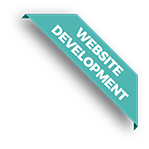A Step by Step Guide to Building Your First Website or Overhauling Your Existing One

In this post, we will discuss the steps involved in website development for both old and new websites:
Building or designing your business’s website can be a confusing process, especially if you don’t know where to start. You may understand why you need the “Contact Us” or “About Us” pages, but what else? What content will you include on your website?
When it comes to building a new website, web design remains a vital component, however the content is equally, if not more, important. Whether you’re overhauling an existing site or building a brand new one, it’s essential that you have a thorough and well thought out content strategy in place so that you can capture leads and increase your business’s bottom line.
WHAT IS A CONTENT STRATEGY?
A content strategy allows you to plan, create and deliver content. Within the strategy, you should create meaningful, cohesive and engaging content that helps you to nurture your relationship with your audience.
DEFINE YOUR GOALS
Firstly, it’s important that you define not only your business goals, but your website goals and your content goals too. If you understand what you are trying to achieve before you start planning out your website, it makes the whole process easier.
Think: What do you want to achieve? Is your goal to convert new customers or drive awareness? How will you measure your website’s success?
In the majority of cases, the content you include on your website should support a number of different goals and objectives.
DEFINE YOUR AUDIENCE
Another key part to your strategy is that you must define the audience you are currently reaching as well as those you are trying to reach.
Find out who’s currently aware of your business. You can gain customer insight through social media channels and digital monitoring. Think: What are the demographics of your audience?
Then, you should also consider what your ideal customer looks like. Sometimes you will find that your existing audience and your ideal audience aren’t quite aligned. By reviewing this information, you can ensure that the content on your new website is underpinned with the target audience in mind, to help bring into line your existing customers and target audience.
REVIEW EXISTING CONTENT
Make a note of the different types of existing content you used to display on your website (if you had one!). If you didn’t, don’t worry about this step.
Once you have made a list of the assets you have available, review to see if they are still valuable assets. Is the content out-dated? Do your pages rank highly on Google? If so, you may need to update the content rather than completely rewrite it. It all depends on the goals you defined earlier!
During this step, take the opportunity to have a look at how your competitor’s content and how they have organised it on their website. This way you can get a clear idea of what your website needs.
MAP OUT YOUR CONTENT
Now you know what pages you need and what content you have that already exists, you need to create a website map that lays out exactly what pages you will have on your new website.
This isn’t necessarily set in stone – you can develop and change it as you go along, however a site map helps you to identify the relationships between pages.
CREATE YOUR CONTENT
The most time-consuming step of this process will be writing and creating the content for your website.
Working alongside your SEO strategy, take the time to hit all of the essentials such as your titles, copy, metadata, images, video content and additional assets. Make sure that your content is on brand with your wider business, with the same tone of voice and style throughout.
Always make sure you include a call to action to demonstrate effectively how you can support your audience and what their next step forward should be.
DON’T FORGET TO OPTIMISE
We’d love to say that’s it, but it’s not that simple! Content can be magical, if you get it right. Most of the time, however, creating an effective content marketing campaign doesn’t happen overnight. Set up Google Analytics or use another analytic platform so that you can review the success of your website pages.
Find out more about the (not so) secret to creating effective content campaigns in our previous blog post.
EDGE CREATIVE
Building or developing the content on your website doesn’t have to be difficult. By hiring a content and marketing agency, you can rest assured knowing that your website is in safe hands.
We are currently offering free consultations with a Marketing Director, so that you can develop your understanding of the importance of a content-led website. If you are interested in this offer, please email our Content Creator Jess at jessica@edge-creative.com.
